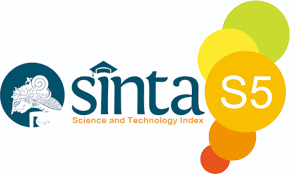Kinerja Komparatif LSTM dan XGBoost untuk Peramalan Radiasi Matahari Perkotaan Tropis
Abstract
The increasing reliance on clean energy has accelerated the development of solar energy infrastructure. However, its intermittent nature—especially in tropical urban climates—poses significant challenges to maintaining grid stability. This study compares the performance of two machine learning algorithms, Long Short-Term Memory (LSTM) and Extreme Gradient Boosting (XGBoost), for hourly solar irradiance forecasting in two climatically distinct tropical cities: Jakarta and Bogor. Using a 10-year historical dataset from NASA POWER that includes solar irradiance and relevant meteorological variables, this research addresses the gap in comparative analysis of deep learning versus ensemble models within high-granularity tropical data settings. The methodology involves data acquisition, preprocessing, feature engineering, model development, hyperparameter tuning, and evaluation using RMSE, MAE, and R² metrics. The results show that LSTM consistently outperforms XGBoost in both cities. In East Jakarta, LSTM achieved a RMSE of 29.24, MAE of 15.63, and R² of 0.9875, compared to XGBoost with RMSE of 38.65, MAE of 18.92, and R² of 0.9782. Similarly, in Bogor Regency, LSTM achieved RMSE of 30.73, MAE of 16.89, and R² of 0.9862, outperforming XGBoost which recorded RMSE of 38.41, MAE of 18.68, and R² of 0.9785. These findings highlight LSTM's superior ability to capture complex temporal dependencies and nonlinear trends in solar irradiance time-series data, especially under the fluctuating weather patterns characteristic of tropical urban environments. The results provide strong empirical support for implementing LSTM-based forecasting in solar energy management systems across similar geographic regions.
Keywords
Full Text:
PDFReferences
F. Afif and A. Martin, “Tinjauan Potensi dan Kebijakan Energi Surya di Indonesia,” J. Engine Energi, Manufaktur, dan Mater., vol. 6, no. 1, pp. 1–14, 2022.
H. Bayu and J. Windarta, “Tinjauan Kebijakan dan Regulasi Pengembangan PLTS di Indonesia,” J. Energi Baru dan Terbarukan, vol. 2, no. 3, pp. 123–132, 2021, doi: 10.14710/jebt.2021.10043.
J. M. Kadang and J. Windarta, “Optimasi Sosial-Ekonomi pada Pemanfaatan PLTS PV untuk Energi Berkelanjutan di Indonesia,” J. Energi Baru dan Terbarukan, vol. 2, no. 2, pp. 74–83, 2021, doi: 10.14710/jebt.2021.11113.
D. Septiadi, P. Nanlohy, M. Souissa, and F. Y. Rumlawang, “Proyeksi Potensi Energi Surya Sebagai Energi Terbarukan (Studi Wilayah Ambon Dan Sekitarnya),” J. Meteorol. dan Geofis., vol. 10, no. 1, pp. 22–28, 2009, doi: 10.31172/jmg.v10i1.30.
M. I. Maulana, V. Naubnome, and J. Sumarjo, “Effect of Irradiation and Temperature on Output Power Efficiency in Canadian Solar 270 Wp Photovoltaic Modeling,” J. Polimesin, vol. 19, no. 2, pp. 176–181, 2021.
J. Windarta, E. W. Sinuraya, A. Z. Abidin, A. E. Setyawan, and A. -, “PERANCANGAN PEMBANGKIT LISTRIK TENAGA SURYA (PLTS) BERBASIS HOMER DI SMA NEGERI 6 SURAKARTA SEBAGAI SEKOLAH HEMAT ENERGI DAN RAMAH LINGKUNGAN,” in PROSIDING SEMINAR NASIONAL MIPA 2019 Universitas Tidar, 2019, pp. 21–36.
L. O. A. Barata, S. -, R. F. Naryanto, M. K. Delimayanti, and L. Baride, “Studi Karakteristik Energi Surya untuk Pemanenan Energi: Studi Awal di Kota Kendari,” Pist. J. Teknol., vol. 10, no. 1, pp. 8–18, 2025.
H. B. Tambunan, P. A. A. Pramana, and B. S. Munir, “Intermittent Renewable Energy Source (IRES) model of solar energy in Cipayung microgrid system,” J. Phys. Conf. Ser., vol. 1402, no. 3, 2019, doi: 10.1088/1742-6596/1402/3/033103.
O. Bamisile, A. Oluwasanmi, C. Ejiyi, N. Yimen, S. Obiora, and Q. Huang, “Comparison of machine learning and deep learning algorithms for hourly global/diffuse solar radiation predictions,” Int. J. Energy Res., vol. 46, no. 8, pp. 10052–10073, 2022, doi: 10.1002/er.6529.
A. Sagar, S. Hole, and V. Kolluru, “Optimizing Solar Radiation Forecasting for Renewable Energy Systems:,” Sol. Energy Sustain. Dev. J., vol. 14, no. 1, pp. 395–315, 2025, doi: 10.51646/jsesd.v14i1.386.
C. Nithya, J. P. Roselyn, and D. Devaraj, “Real-time solar PV generation in a building using LSTM-based time series forecasting,” Discov. Electron., vol. 1, no. 1, 2024, doi: 10.1007/s44291-024-00023-0.
G. Narvaez, L. F. Giraldo, M. Bressan, and A. Pantoja, “Machine learning for site-adaptation and solar radiation forecasting,” Renew. Energy, vol. 167, no. November, pp. 333–342, 2021, doi: 10.1016/j.renene.2020.11.089.
Ü. Ağbulut, A. E. Gürel, and Y. Biçen, “Prediction of daily global solar radiation using different machine learning algorithms: Evaluation and comparison,” Renew. Sustain. Energy Rev., vol. 135, no. March 2020, 2021, doi: 10.1016/j.rser.2020.110114.
W. Liu et al., “Use of physics to improve solar forecast: Part II, machine learning and model interpretability,” Sol. Energy, vol. 244, no. August, pp. 362–378, 2022, doi: 10.1016/j.solener.2022.08.040.
Y. Xu, X. Ji, and Z. Zhu, “A photovoltaic power forecasting method based on the LSTM-XGBoost-EEDA-SO model,” Sci. Rep., vol. 15, no. 1, pp. 1–13, 2025, doi: 10.1038/s41598-025-16368-9.
Y. Patil, T. Shruti, and R. K., “Time-Series Forecasting Using ARIMA and SARIMA Models for Solar NASA POWER Data,” in 2025 3rd International Conference on Intelligent Systems, Advanced Computing and Communication (ISACC), IEEE, 2025.
B. Brahma and R. Wadhvani, “Solar irradiance forecasting based on deep learning methodologies and multi-site data,” Symmetry (Basel)., vol. 12, no. 11, pp. 1–20, 2020, doi: 10.3390/sym12111830.
DOI: http://dx.doi.org/10.22441/format.2025.v14.i2.010
Refbacks
- There are currently no refbacks.
Copyright (c) 2025 Format : Jurnal Ilmiah Teknik Informatika

This work is licensed under a Creative Commons Attribution-NonCommercial-NoDerivatives 4.0 International License.
Format : Jurnal Ilmiah Teknik Informatika
Fakultas Ilmu Komputer Universitas Mercu Buana
Jl. Raya Meruya Selatan, Kembangan, Jakarta 11650
Tlp./Fax: +62215840816
http://publikasi.mercubuana.ac.id/index.php/format

|

Ciptaan disebarluaskan di bawah Lisensi Creative Commons Atribusi-NonKomersial 4.0 Internasional.











